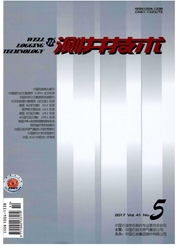

 中文摘要:
中文摘要:
基于测井资料讨论了近井脆性指数和近井可压性的求取方法.利用压裂施工曲线,反求岩石力学参数,得到远井脆性指数;从破裂耗能的角度评价地层压裂的难易程度,利用远井脆性指数和压裂射孔段单簇裂缝破裂耗能指数构建远井可压性指数.将2种方法应用于1口致密油水平井的可压性评价中,从近井和远井脆性指数、近井和远井可压性指数分别与造缝体积(VSR)的关系可知,脆性指数反映储层改造体积有限,可压性指数更能反映储层改造体积情况;相较近井可压性,远井可压性考虑了压裂段整个地层的情况,与储层改造体积关系更好.同时近井和远井可压性指数与储层产能关系较好,这对致密油水平井储层进行压前预测和压后评估具有重要意义.
 英文摘要:
英文摘要:
Based on the logging data, the methods of estimating the near-well brittleness index and the near-well fracturing performance index are discussed.And the fracturing construction curves are applied to reverse the rock mechanics parameters to obtain the far-well brittleness index, meanwhile from the view of formation fracture energy to evaluate the ease of formation fracturing and then using brittleness index and single cluster perforation fracture energy index to construct far-well fracturing performance index.The two methods are applied to evaluate the fracturing performance of tight oil horizontal well;From the relationship of near-well and far-well brittleness index, fracturing performance index to VSR, the brittleness index is limited to reflect the VSR, and the fracturing performance is better to reflect the VSR.Comparing to the near-well fracturing performance index, the far-well fracturing performance has a better relationship with the VSR, which considers the entire strata of the fracturing section.And the near-well and far-well fracturing performance is in good agreement with the productivity, which shows the importance of evaluating the near-well and far-well fracturing performance, and it's very important for predicting fracturing and post-fracturing performance of tight oil reservoirs.
 同期刊论文项目
同期刊论文项目
 同项目期刊论文
同项目期刊论文
 期刊信息
期刊信息
